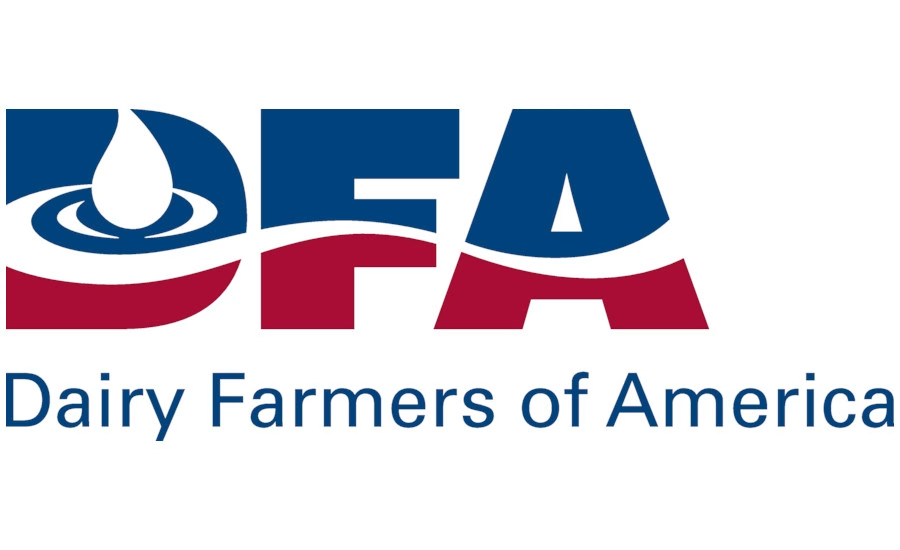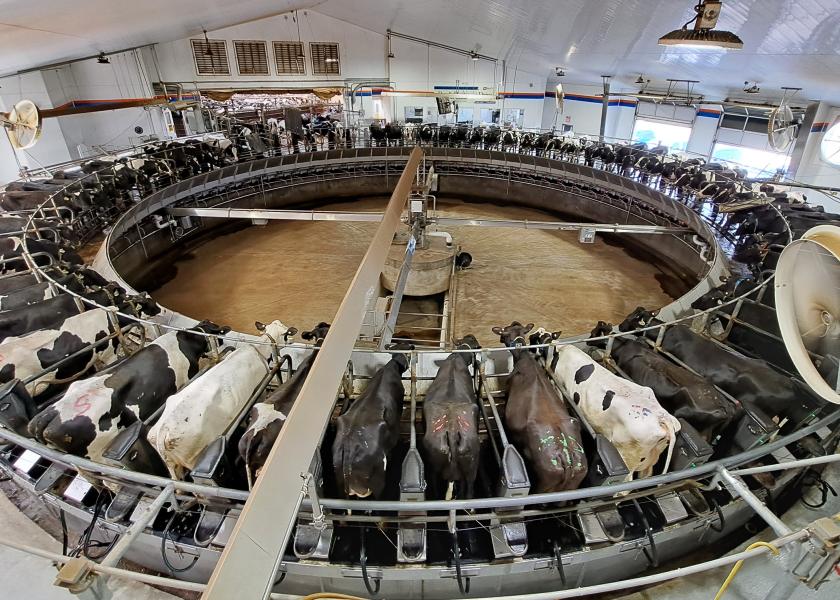Learn how record DMC margins can boost your dairy farm’s profits. Understand feed costs, milk prices, and future expectations.
Summary: July 2024 saw dairy farmers benefit from the highest Dairy Margin Coverage (DMC) margin since May 2022, driven by decreased feed costs. The USDA National Agricultural Statistics Service (NASS) reported a DMC margin of $12.33 per cwt, providing much-needed relief after months of tighter margins. This boost in revenue underscores the importance of the DMC program, which helps farmers balance revenue and feed expenditures. With larger margins, producers can reinvest earnings into farm operations, enhancing their financial health. Projections for the rest of the year remain optimistic, with anticipated margins reaching $15.70 per cwt in November.
- July 2024 experienced the highest Dairy Margin Coverage (DMC) margin since May 2022, primarily due to decreased feed costs.
- The DMC margin USDA National Agricultural Statistics Service (NASS) reported was $12.33 per cwt.
- Higher margins offer crucial financial relief for dairy farmers, allowing them to reinvest in their operations.
- Projections for upcoming months remain positive, with margins expected to reach $15.70 per cwt by November.

Imagine having the finest financial safety net for your dairy farm starting in May 2022. Sounds promising. July’s Dairy Margin Coverage (DMC) margin was $12.33 per cwt, a record high and the most advantageous revenue over feed costs in over a year. Dairy farmers should capitalize on declining feed prices to enhance profitability and minimize risks. Whether you’ve been in the dairy business for decades or are just starting, recognizing and capitalizing on these margins may significantly impact your bottom line. So, why should this news grab your attention? Let’s get into the specifics.
| July 2024 Dairy Margin Coverage (DMC) Data | |
|---|---|
| DMC Margin | $12.33 per cwt |
| Milk Price | $22.80 per cwt |
| Alfalfa Hay Price | $237 per ton |
| Corn Price | $4.24 per bushel |
| Soybean Meal Price | $364.30 per ton |
| Total Feed Costs | $10.47 per cwt |
Why the Dairy Margin Coverage (DMC) Program is Your Farm’s Best Friend in Hard Times
The Dairy Margin Coverage (DMC) program is a reliable safety net for dairy producers, offering a balanced approach to revenue and feed expenditures. Launched to provide financial assistance during low milk prices and high feed costs, the DMC program brings stability to the dairy market by ensuring that farmers can meet their production costs. The program provides monthly margin forecasts by calculating the difference between the national all-milk price and average feed costs, empowering farmers to make informed decisions.
The DMC program has consistently proven its worth by providing significant financial aid during challenging times. The July margin of $12.33 per hundredweight is exceptionally bright, the highest reported since May 2022. This milestone represents a positive shift, offering dairy producers a much-needed boost in profitability.
Current Statistics: A Snapshot of July 2024
For a detailed look at July 2024, there’s a lot to be optimistic about in the numbers:
- DMC Margin: The Dairy Margin Coverage margin hit $12.33 per cwt, the highest since May 2022.
- Milk Price: The all-milk price remained stable at $22.80 per cwt, unchanged from June.
- Feed Costs: A significant drop in feed costs has brought some financial relief:
- Alfalfa hay: Down to $237 per ton, a $19 decrease from June.
- Corn: Lowered to $4.24 per bushel, down 24 cents from last month.
- Soybean meal: Decreased to $364.30 per ton, reflecting a drop of $19.80.
From Dismal to Delightful: How July 2024’s Margin Recovery Stands Strong
It’s interesting to observe how July 2024’s margin compares to other of our more difficult months. Fast forward to May 2023, when the margin fell to $4.83 per cwt, and the recovery is dramatic. What a difference one year can make! By July 2024, we’d seen a strong rebound, with the DMC margin reaching $12.33 per cwt.
So, what is causing this positive shift? A significant decrease in feed prices is a central element of the narrative. Corn prices fell from $4.48 per bushel in June to $4.24 in July. Likewise, alfalfa hay and soybean meal prices fell, hitting low levels since early 2021. These decreases reduced feed expenditures to $10.47 per cwt, down 67 cents from June.
But it’s more than simply food. Milk prices have remained constant, contributing significantly to the positive margin. July’s all-milk price remained stable at $22.80 per cwt, matching June’s cost but representing a $5.50 gain from the previous year. The price stability and lower feed costs provided a more lucrative situation for dairy producers.
So, looking at your company and the data in front of you, it’s evident that monitoring market trends and feed prices may substantially impact your bottom line. The DMC margin for July 2024 serves as a reminder of how rapidly fortunes may change in the dairy sector and the need to remain informed and proactive.
Regional Variations and Their Impact on Margins
Have you noticed how milk prices fluctuate greatly depending on where your farm is located? Let’s examine some geographical disparities generating debate in the dairy sector.
For instance, Georgia and Florida had the most substantial rises in milk prices in July. Georgia recorded a $1.20 rise to $27.10 per cwt, while Florida followed closely at $27 per cwt, up $1.10. States such as South Dakota, Iowa, and Minnesota had even more significant year-over-year increases.
- South Dakota: A phenomenal increase of $7.50 per cwt from July 2023 to July 2024
- Iowa: A noteworthy jump of $7.30 per cwt year-over-year
- Minnesota: Close on Iowa’s heels with a $7.10 per cwt increase
But what do these variations mean for your farm’s bottom line?
The considerable disparities in state-level milk pricing directly influence DMC margins. When milk prices rise, the margin over feed costs widens, providing an excellent chance for farmers in higher-priced states to increase their profitability. In contrast, states with lesser or no gains see their margins compress, which may indicate that farmers need to think differently to retain profitability.
Understanding these regional patterns empowers you to make more informed decisions about participating in programs like the DMC or planning for your farm’s financial future. Keeping track of these geographical variations is critical to staying ahead and could be crucial to your farm’s success.
You’ve Likely Noticed a Welcome Shift in Your Feed Costs Recently
Let’s examine why this occurs and how it affects your bottom line. First and foremost, grain prices have dropped significantly. The average cost per bushel fell to $4.24 in July, the lowest since January 2021. This decrease means you’re paying less for one of the most critical components of dairy cow feed.
Next, alfalfa hay prices dropped. In July, the average cost per ton was $237, down $19 from the previous month and $51 less than a year before. The last time we saw these rates was mid-2021, translating into significant savings on high-quality feed for your herd.
Finally, soybean meal prices have fallen to $364.30 per ton from $384.10 in June. Many people were relieved when feed prices dropped to levels similar to those in early 2024.
So, how does this impact the Dairy Margin Coverage (DMC) program? Said, this is fantastic news. Lower feed prices immediately translate into larger DMC margins. These lower expenditures helped boost the July DMC margin to $12.33 per cwt. This increases your revenue above feed expenses, making your financial situation more tolerable.
In essence, decreased feed prices benefit your farm by creating a buffer and giving you more financial breathing space.
What Do These Record-Breaking Margins Mean for Dairy Farmers Like You? Let’s Break it Down.
First and foremost, higher margins have a direct influence on profitability. Higher margins indicate that you are making a higher return on your milk output after paying your feed expenditures. These additional earnings may be reinvested into your farm operations, whether to upgrade equipment, improve cow welfare, or provide a financial buffer for future uncertainties.
Next, let’s discuss decision-making. You can make strategic decisions that improve your farm’s efficiency and output when margins are high. You may have been considering increasing your herd or investing in cutting-edge equipment; larger margins may give you the confidence to make those moves.
Finally, think about your overall financial health. Better margins increase your cash flow, allowing you to satisfy your commitments on schedule. This might also result in improved loan conditions from lenders, providing more financial flexibility to operate your operations successfully.
These strong margins provide immediate comfort and a path to your dairy farm’s long-term development and financial security. Monitor these numbers and use them as a benchmark for your farm’s economic strategy and ambitions.
What’s on the Horizon for Dairy Margin Coverage?
The Dairy Margin Coverage (DMC) program expects significantly better margins for the remainder of the year. According to current statistics, margins will likely hit a program high of $15.70 per cwt in November. This projection is based on feed costs of $10.48 per cwt and all-milk prices of $26.18 per cwt.
However, it’s important to remember that these predictions are subject to change. Several factors could influence the final numbers, including:
- Feed Costs: Any fluctuations in the prices of crucial feed components like corn, soybean meal, and alfalfa hay can significantly impact the margins.
- Milk Prices: Global and domestic demand for milk and dairy products can drive milk prices up or down.
- Market Conditions: Economic trends, trade policies, and unforeseen events, such as natural disasters or political changes, can also affect the market.
- Climate Conditions: Weather patterns affecting crop yields can affect feed availability and cost changes.
It’s critical to be educated about these possible factors. Monitor market information and contact industry experts to make more proactive choices for your dairy farm. Remember that information is power, particularly in a dynamic business like dairy farming.
The Bottom Line
July 2024 has seen a hopeful upturn for dairy producers, with the Dairy Margin Coverage (DMC) margin hitting its highest since May 2022. This favorable margin is partly due to a significant fall in feed costs and robust milk prices. Central dairy states have witnessed different levels of improvement, with some seeing substantial rises in milk prices.
Feed prices have fallen to their lowest level since 2021, helping to improve margins even more. The DMC program has proved to be a dependable support system, with several dairy farms enrolling and benefitting from its payouts. Predicted margins over the following months point to steady improvement, providing a silver lining for dairy producers.
As you negotiate the difficulties of dairy farming, have you considered how remaining updated on DMC margins can affect your operations? Keeping an eye on these margins and staying current with industry developments might be critical. The future of dairy farming depends on intelligent choices and timely information—are you prepared to capitalize on these opportunities?















